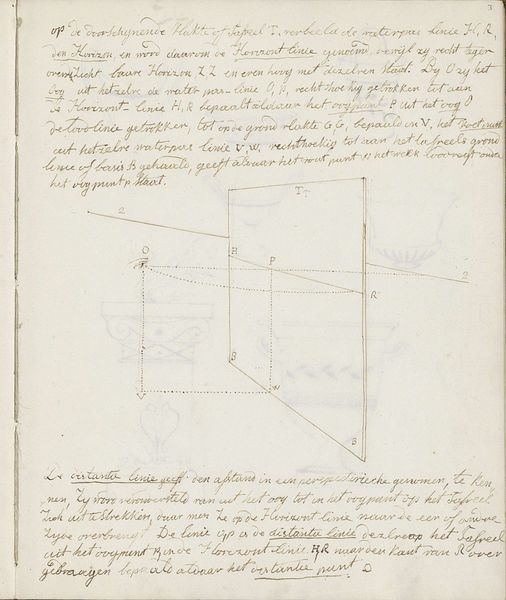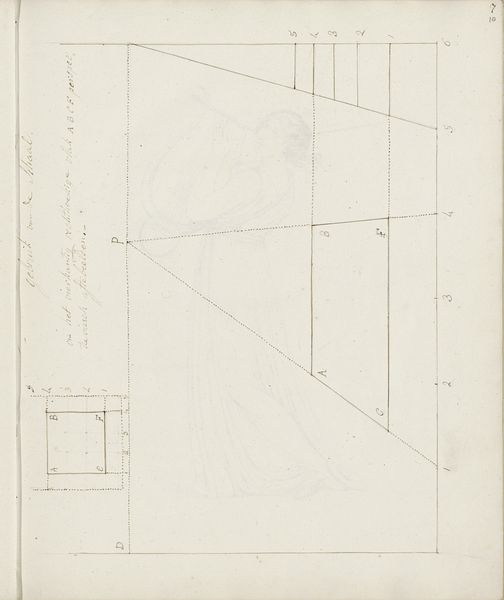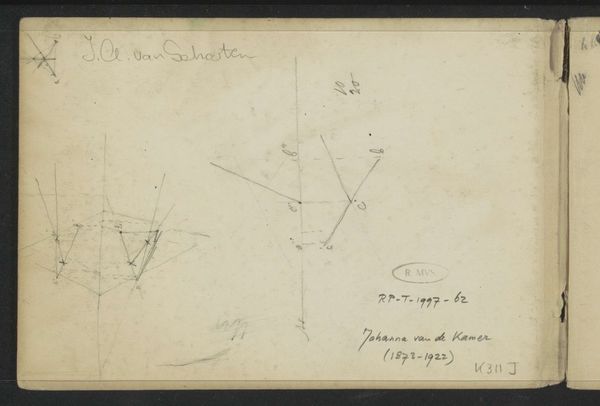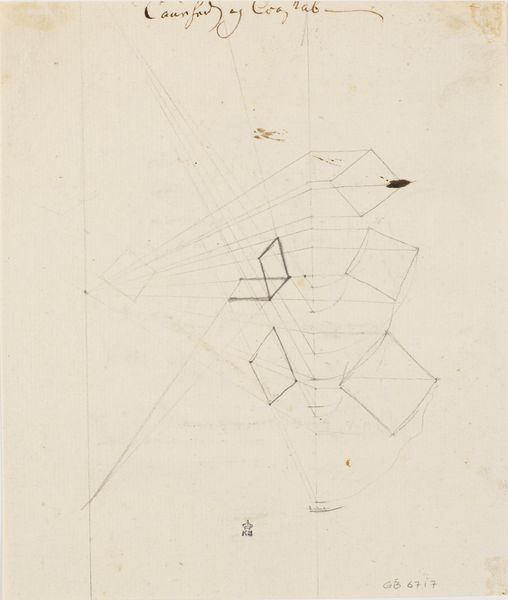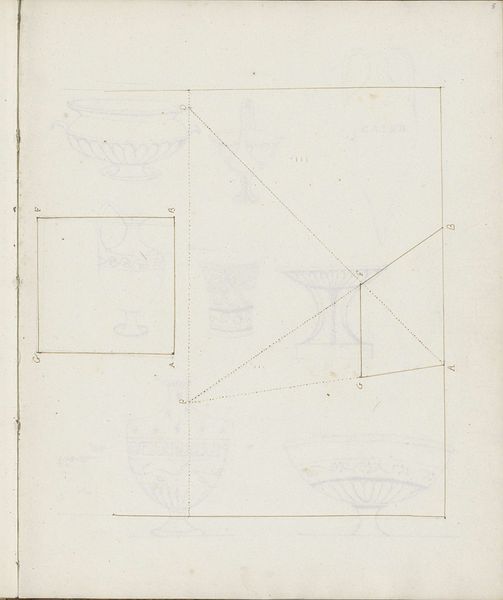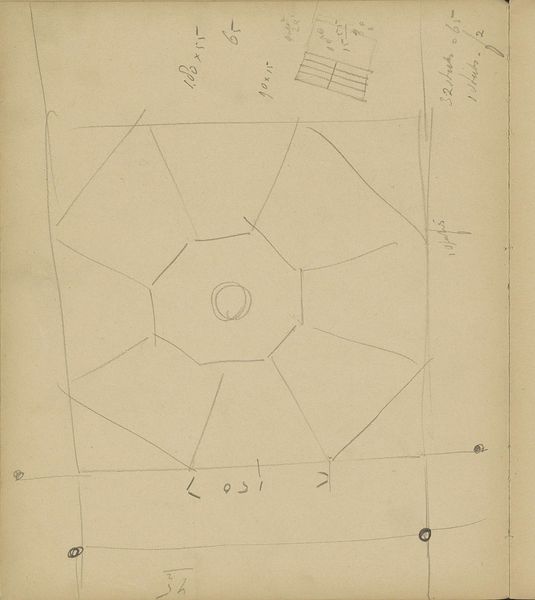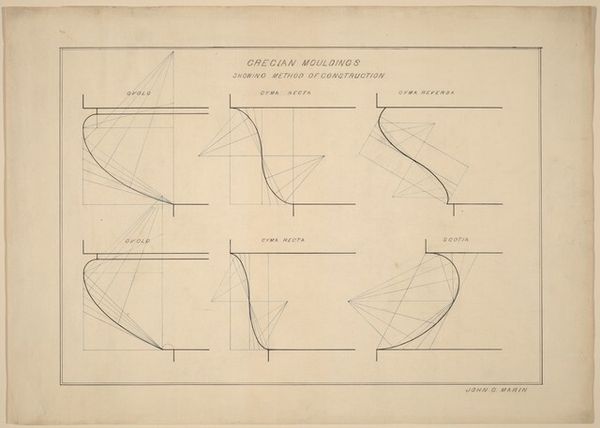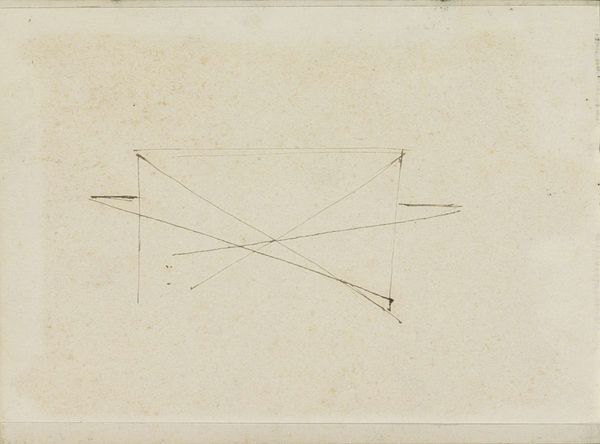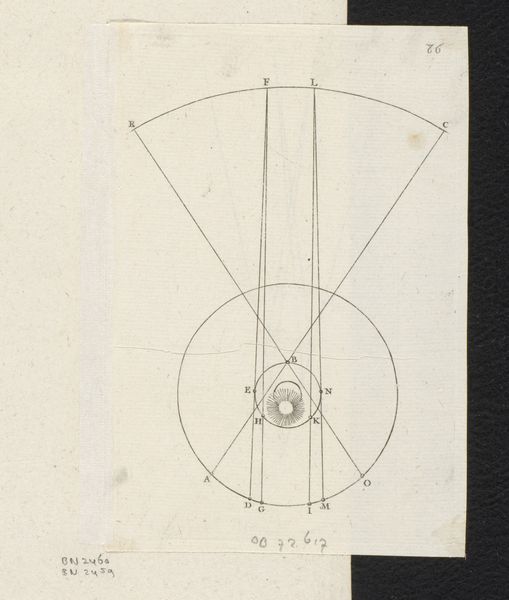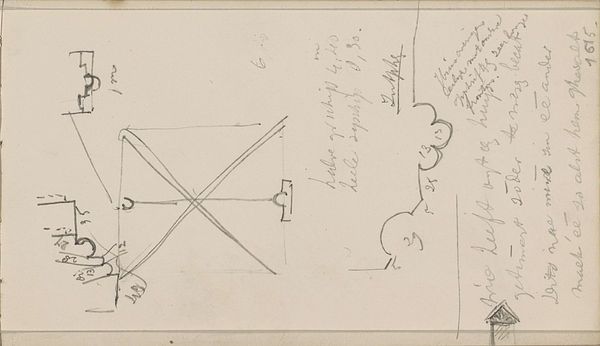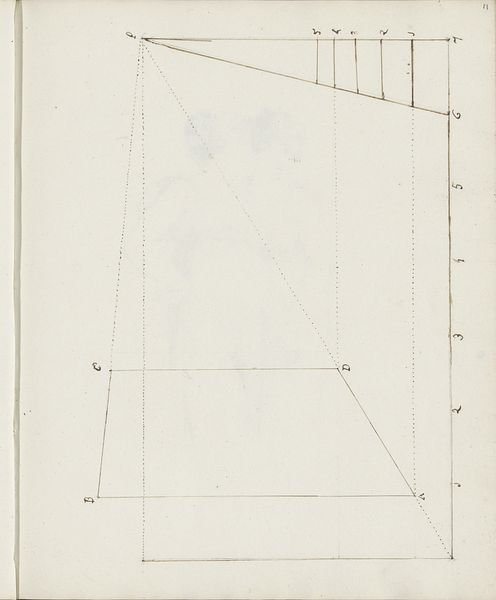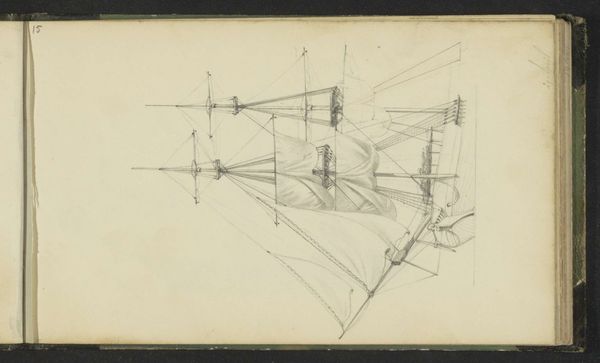
To Find the Vanishing of Any Building, one side being given 1700 - 1800
0:00
0:00
drawing, print, paper, ink, pencil, architecture
#
drawing
# print
#
perspective
#
paper
#
form
#
ink
#
geometric
#
pencil
#
arch
#
line
#
architecture
Dimensions: sheet: 9 1/4 x 15 in. (23.5 x 38.1 cm)
Copyright: Public Domain
Curator: Welcome. The work before us, titled "To Find the Vanishing of Any Building, one side being given," is a fascinating, albeit anonymous, drawing and print dating back to somewhere between 1700 and 1800. It is currently held at the Metropolitan Museum of Art. Editor: My immediate impression is one of cold precision. The stark lines and muted ink create a rigid structure—more of an equation than an artistic statement, really. Curator: Indeed. Its social value lies in visualizing knowledge. These kinds of drawings were essential tools for architects and artists seeking to master perspective, reflecting the period's broader cultural investment in rationalizing vision and space, which transformed architecture and city planning, thus society. Editor: I can see that utility, but let's look closer at the composition. See how the artist uses simple geometric shapes—a square, triangles, and precisely placed points—to construct a visual guide? There's elegance in that reduction. Curator: These prints, beyond the surface, helped democratize knowledge and craft. Technical drawings like these empowered burgeoning middle classes of builders and artisans to emulate the grand architectural designs previously only available to elites. It served to shift cultural power and reshape societal values around building. Editor: I appreciate that context, but from a formal point of view, the power of this piece comes from its restraint. It isn’t just a building design; it presents an abstract meditation on spatial relationships. Consider the semiotics; even the faintest lines guide the eye through a complex theoretical understanding of form and structure. Curator: Absolutely. And while technically produced anonymously, this wasn’t necessarily because the artist wished to remain unknown but because the work transcended the cult of personality associated with singular artistic genius, thus highlighting collective knowledge. That these instructions were replicated so widely underlines their importance to those with power and without. Editor: A testament to how fundamental shapes help us understand spatial dynamics and to the objective precision afforded through simple representation. Ultimately this impacts every element in artmaking that utilizes it. It is more than simple diagram. Curator: Agreed. These are records of transformation both in method, means, and mindset that forever shaped the human landscape. It has encouraged me to revisit the function and definition of art, thank you.
Comments
No comments
Be the first to comment and join the conversation on the ultimate creative platform.

